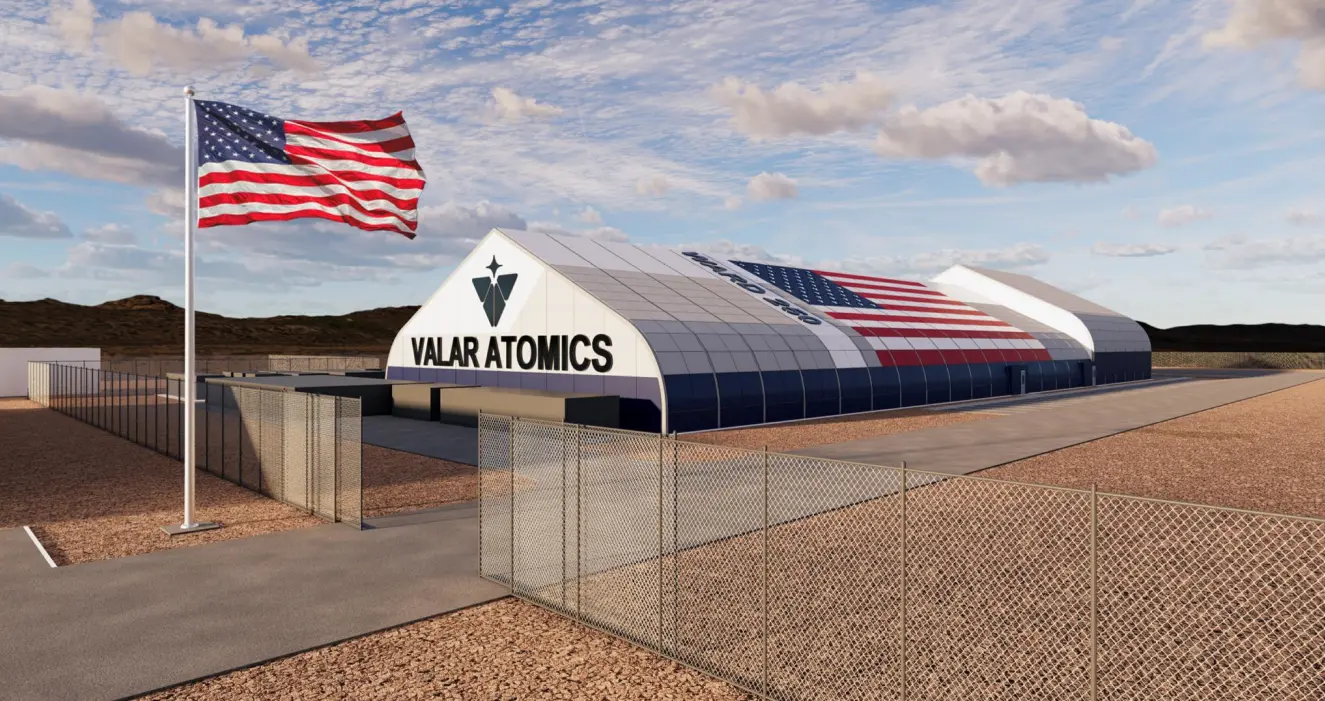
By Aidan Mortensen | KOAL News | Image of proposed Valar Atomics Building courtest of Valar Atomics
On Tuesday, July 8, members of the Valar Atomics team traveled to Emery County to address questions and concerns regarding the advanced test nuclear reactor that is to be constructed at the San Rafael Energy Research Center.
Opening the meeting, Jaron Wallace, Director of the San Rafael Energy Center, explained what makes the reactors being tested in Orangeville stand out compared to other nuclear technologies. “In talking about micro reactors, these are small reactors. Now, we’re talking about research and test reactors, which are even smaller than these development reactors. And these are reactors that are for – as it says – research and testing. There are many of these throughout the country. Many of you may know that the University of Utah is home to one of these test reactors. So we do have one here in the state. We have experience with these test reactors in the state. And essentially what we’re doing is the same thing at the lab.”
Wallace also spoke on the concerns of safety that were raised in the previous public meeting about the nuclear industry in Emery County: “Obviously, safety is the number one priority. We heard a lot of comments about nuclear safety, and I’m sure we’ll hear some questions and answers tonight about safety. That is our goal above all else.”
Following Wallace, Max Ukropina from Valar Atomics explained why the company had chosen Emery County for the reactor test site. “When we were looking for a potential test site, we did a national search. We wanted a community that had a history and energy, but also an understanding of what’s to come. And so we are grateful today. We had a tour of much of the county. We went to the lab, met with all the commissioners, and we couldn’t be more excited to be inside the community.”
Addressing the role of coal in the future of energy, Ukropina explained,” a lot of nuclear companies want to replace coal. We think that’s pretty dumb. Coal is a highly energy-dense resource that this valley utilizes fully, and we can actually integrate it into our processes using a thermochemical cycle from the reactors. And we pumped in CO2 and combined that with hydrogen to make synthetic fuels on paper cheaper than actually drilling for it.”
According to company documents, the goal for Valar is to have the first reactor online by July 4, 2026. This reactor would be strictly for testing and not used to produce any power. If successful, the company aims to commercialize and deploy the reactor nationally at gigasites by 2028.
Moving into questions from the public, the main topic on the minds of attendees was the safety of this nuclear technology. Laren Huntsman, manager of the Hunter Power Plant, asked the Valar representatives to explain the difference in fuel source between TRISO – which is what the test reactor would utilize – and fuel rods. “There are two reasons why this technology has a very good safety record and has the potential for even better safety. The first is a fuel form, which is called TRISO. And what we do is we take little balls of uranium about the size of a golf ball and we wrap them in high-temperature ceramics. These are not just regular ceramics, they’re silicone carbide ceramics that stay or maintain their integrity, that don’t break in temperatures of up to 2200 degrees Celsius.”
He continued,” So what happens is, in the case of an accident, in the case of a loss of cooling, which is the most common accident people consider, the fuel doesn’t heat up significantly. Because the reactor geometry is such that the heat escapes and diffuses naturally out of the reactor and the fuel never approaches the limit where it starts to see additional things.”
Kevin Butler, a member of the Orangeville City Council, pressed the representatives on whether they planned to stay in the county following the test and produce the reactors in Emery County. “We’re hesitant to be the company that comes in and then is unable to deliver, right? We’re a startup. This is a two-year-old company. This is gonna be our biggest project to date. We’re putting $50 million in here, that’s the largest project we’ve done to date,” said one representative. “So we very much don’t want to overpromise. Our intention is certainly to take this from a test reactor to another reactor next to it. And then we’ll begin to build commercial reactors once we’ve tested and proved that they’re ready. And at that point, there are a couple of different pieces that are going on. The first is the reactors themselves. The second is whatever construction manufacturing is happening with the data center customer. And then eventually, I think advanced manufacturing will make sense.”
During this meeting, the company also unveiled preliminary floor plans for its facility, located at the San Rafael Energy Research Center. In total, the building would take up 41,560 square feet.
Following the remarks from Valar, Commissioner Keven Jensen asked the public to direct their questions toward the Commission for the remaining minutes of the meeting. The point of concern for residents was more effective communication from the County government. One resident expressed that although the Commission distributed QR codes and social media posts, these methods were ineffective for those without internet connections.
A full audio recording of the hearing is available online here.
